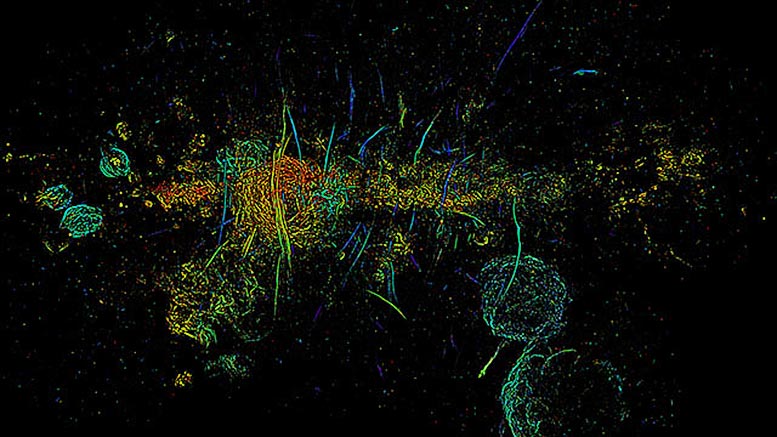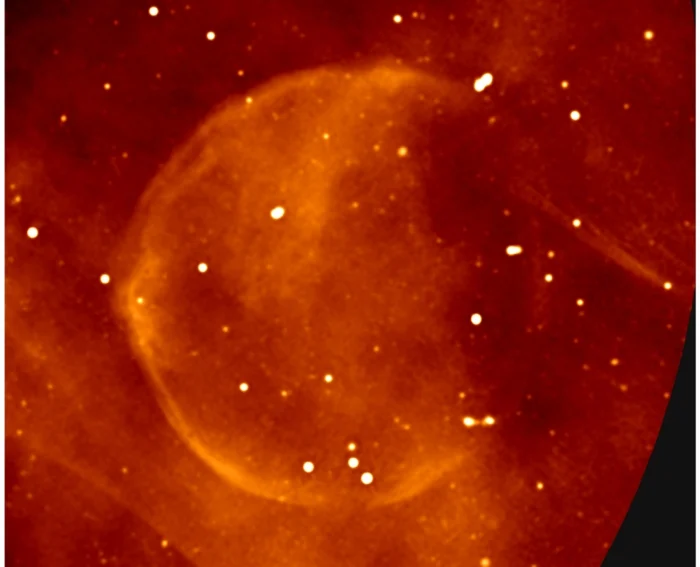According to astrophysicists, an unmatched new telescope image of the Milky Way’s center has revealed almost 1000 mysterious structures dangling there in space. The ultra-sensitive MeerKAT radio telescope in South Africa was used for taking images and it had shown the strands of magnetic filaments. These strands were found in pairs and clusters and they were stretched up to 150 light-years long.
Using observations at radio wavelengths, Northwestern University’s Farhad Yusef-Zadeh discovered the highly oriented magnetic filaments in the early 1980s. He mentioned, “We have studied individual filaments for a long time with a myopic view.” But those filaments discovered recently were found 10 times the number of those strands they knew previously.

As it is around 25,000 light-years away, it is quite difficult to see into the center of the Milky Way. It is wrapped in dense clouds of dust and gas that chock some wavelengths of light. But technology is being used by astrophysicists to catch sight of such invisible wavelengths.
Its latest image was constructed from 200 hours of observation data, collected over there years and it revealed the region in radio wavelengths with unmatched clarity and depth. Yusef-Zadeh along with his team had used a technique to isolate the foreground from the background, revealing the magnetic filaments distributed in clusters in the center of the galaxy.
It is uncertain how they came into existence and what is their origin. The only thing that is known to the astronomers is that they contain cosmic-ray electrons, spinning around in filaments at a speed closer to that of light. The new images have let the researchers discover a little more about the strands.
“If you were from another planet, for example, and you encountered one very tall person on Earth, you might assume all people are tall. But if you do statistics across a population of people, you can find the average height,” Yusef-Zadeh explains. He has further mentioned, “That’s exactly what we’re doing. We can find the strength of magnetic fields, their lengths, their orientations, and the spectrum of radiation.” They have come to know that the magnetic fields are amplified along the entire length of all the filaments. Moreover, new data has revealed that previously unknown supernova remnants have a different radiation signature from the filaments. So, it cannot be counted towards likely ancestors of the filaments.

However, in 2019, previous MeerKAT data revealed that the existence of giant radio bubbles extending above and below the galactic plane, could be related to the filaments, but this possibility would need to be explored fully in the future.
Astrophysicists have mentioned that they don’t know the process that accelerates the electrons within magnetic filaments. The next step will be to study the characteristics of each filament for a full catalog that will allow in-depth statistical analyses.
“We’re certainly one step closer to a fuller understanding,” Yusef-Zadeh says. “But science is a series of progress on different levels. We’re hoping to get to the bottom of it, but more observations and theoretical analyses are needed. A full understanding of complex objects takes time.”


